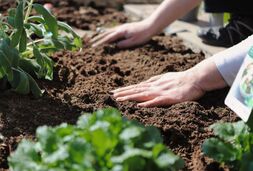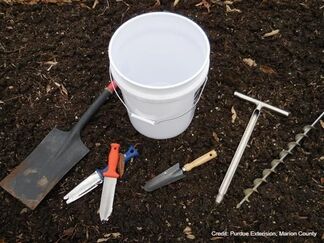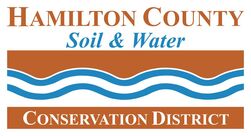Soil Testing
What is a soil test?
A soil test is a process by which elements (phosphorus, potassium, calcium, magnesium, boron, sulfur, manganese, copper, iron and zinc) are chemically removed from the soil and measured for their "plant available" content within the sample. The quantity of available nutrients in the sample determines the amount of fertilizer or other soil amendment that is recommended. A soil test also measures soil pH, organic matter and cation exchange capacity (CEC). These analyses indicate whether lime is needed and, if so, how much to apply. Why Have Your Soil Tested?
For example: When applying too much lime, soil pH may rise above the needed level, which causes nutrients such as iron, manganese, boron, copper and zinc to become less available to plants. It is also common to see homeowners purchase one bag of lime when they purchase one bag of fertilizer. Based on a lawn size of 5000 square feet, one bag of fertilizer may be enough. Applying one bag of lime over 5000 square feet, however, will have little effect on soil pH. |
Tests offered and fees:
Basic Test - $35 Analysis includes organic matter, phosphorus, potassium, calcium, magnesium, CEC, pH, and buffer pH. Complete Test- $45 Analysis includes Basic Test plus conductivity, boron, copper, iron, manganese, sulfur and zinc. Onsite Service - $50 If you would like the SWCD to take the samples onsite for you (up to a max. of 5), an additional $50 service fee will apply. Lead testing is an additional $45. Collect your soil sample (see instructions below) and submit sample with cash or check payment to SWCD office. Save time at the office by printing the form above before dropping off your sample. Office hours are Monday-Friday 8-4:30.
|

How to collect a soil sample:
Since only a small portion of the soil is used for testing, it is very important that the sample be representative of an area. For a standard soil test, take several samples from each area of your yard (front yard, shrub bed, garden, etc.). For large areas, 5-8 cores are needed, but for narrow shrub or flower borders, 2-4 cores will do the job. Mix all of the samples together in a clean pail or bucket to get your representative sample or "average" soil for your yard.
If you are targeting a problem area, you can restrict your sampling to the problem area only.
For complete instructions, view the Purdue Extension Collecting Soil Samples for Testing Publication here.
Since only a small portion of the soil is used for testing, it is very important that the sample be representative of an area. For a standard soil test, take several samples from each area of your yard (front yard, shrub bed, garden, etc.). For large areas, 5-8 cores are needed, but for narrow shrub or flower borders, 2-4 cores will do the job. Mix all of the samples together in a clean pail or bucket to get your representative sample or "average" soil for your yard.
If you are targeting a problem area, you can restrict your sampling to the problem area only.
- Remove surface debris, such as plant residues, mulch or turf thatch, from the soil before inserting the soil probe, spade, or trowel.
- Sample gardens and shrub and flower beds to a depth of 6-8 inches.
- Sample turf areas to a 3-inch depth.
- Sample tree root zones to 8-12 inches or deeper.
- Sample row crops (in gardens) between the rows to avoid fertilizer bands.
- Sample front and back yard separately if they have been managed differently or contain different types of fill soil.
- Dry samples at room temperature. (Do not use artificial heat.)
- Break up any lumps and remove all stones, debris, grass, etc. When dry, mix well and eliminate clumps.
- Bring 2 cups of soil to the SWCD in a clean container for testing.
For complete instructions, view the Purdue Extension Collecting Soil Samples for Testing Publication here.
